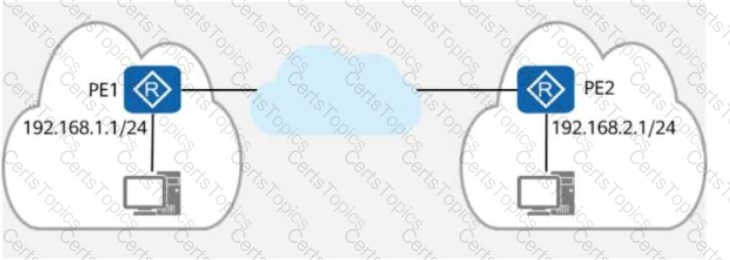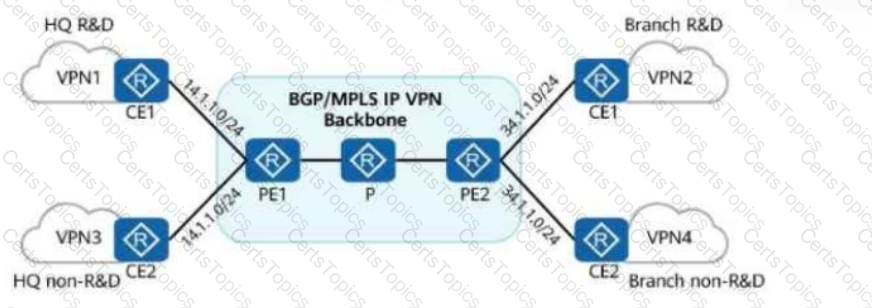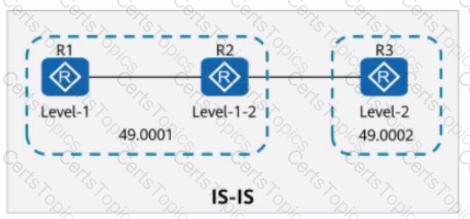Comprehensive and Detailed In-Depth Explanation:
To verify the correct answers, let's analyze how BGP/MPLS IP VPN is used for secure communication and isolation in an enterprise network.
1. Understanding BGP/MPLS IP VPN Concepts
MPLS VPN (Multiprotocol Label Switching Virtual Private Network) is used to:
Allow communication between specific sites by using Route Targets (RTs).
Ensure isolation of specific areas (e.g., R&D vs. non-R&D) by controlling RT import/export policies.
Utilize Route Distinguisher (RD) to make overlapping IP addresses unique within the VPN.
2. Analyzing the Answer Choices
✅ A. "To enable communication between the headquarters and branch R&D areas, both the ERT and IRT of VPN1 and VPN2 can be set to 100:100." → TRUE
Explanation:
ERT (Export Route Target) and IRT (Import Route Target) define which VPNs share routing information.
If VPN1 (HQ R&D) and VPN2 (Branch R&D) use the same RT (100:100), they will exchange routes, enabling communication.
Correct configuration:
VPN1: ERT 100:100, IRT 100:100
VPN2: ERT 100:100, IRT 100:100
❌ B. "To implement communication between the headquarters and branch R&D areas, the RDs of VPN1 and VPN2 need to be set to the same value." → FALSE
Explanation:
RD (Route Distinguisher) is only used to make overlapping IP addresses unique within the MPLS VPN.
RD does NOT control route exchange between VPNs (RTs control route exchange).
VPN1 and VPN2 can have different RDs but still communicate if they share the same RT (100:100).
✅ RDs do NOT need to be the same for VPNs to communicate.
❌ This statement is false.
❌ C. "R&D areas and non-R&D areas have overlapping address spaces. Therefore, services in the two areas cannot be isolated." → FALSE
Explanation:
Overlapping address spaces are common in MPLS VPNs and can be isolated using unique Route Targets (RTs).
As long as VPNs have different RTs, their traffic remains isolated.
For example:
VPN1 (R&D): RT 100:100
VPN3 (non-R&D): RT 200:200
✅ D. "To isolate R&D areas from non-R&D areas at the headquarters, the RTs of VPN1 can all be set to 100:100 and the RTs of VPN3 can all be set to 200:200." → TRUE
VPN1 (R&D): RT 100:100
VPN3 (non-R&D): RT 200:200
Since VPN1 and VPN3 do NOT share the same RTs, their routes remain separate.
✅ This ensures isolation between R&D and non-R&D areas.


